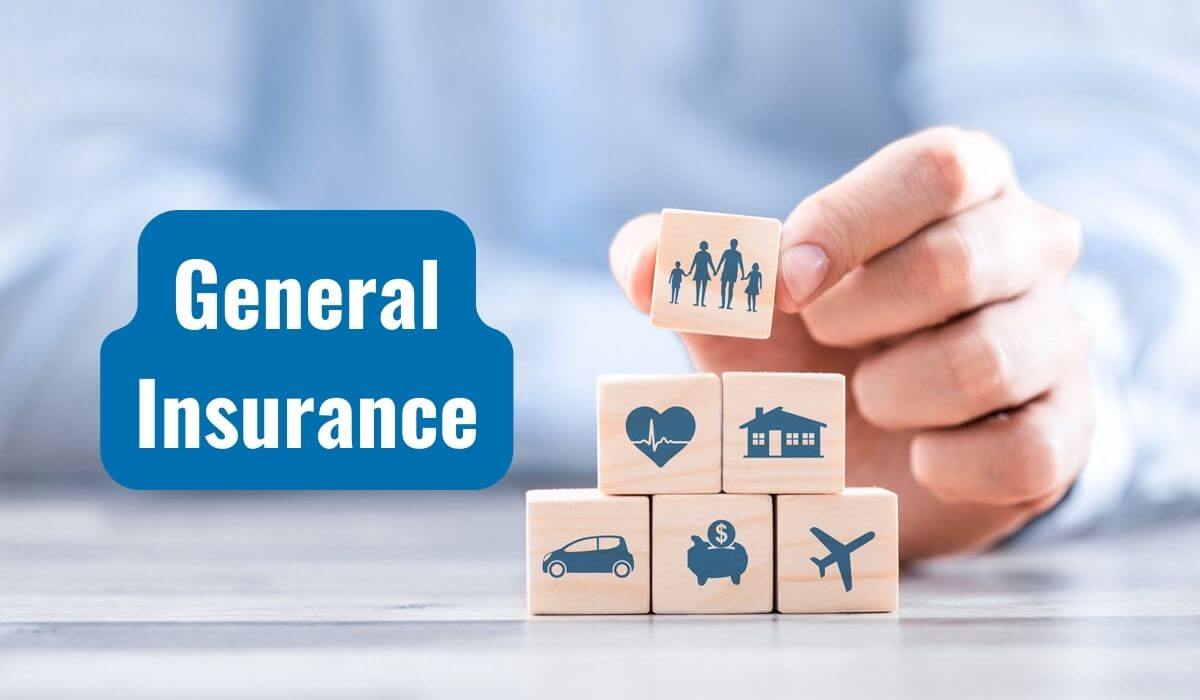What to Do in a Car Accident Not at Fault
Anyone can find themselves as the victim of a car accident through no fault of their own. After the initial shock and adrenaline rush of the crash subside, it’s important to stay calm and collected; otherwise, you could make mistakes that compromise your safety, your legal rights, and your health. Many things need to get done and many forms need to be filled out to start the claims process. Here are five crucial things you should do after an accident that wasn’t your fault:
Stay Calm and Ensure Safety
After an accident, it’s easy to panic. But the adrenaline rush can actually help propel you through the immediate aftermath of a crash. Your first priority is to ensure your safety and the safety of your passengers and any other people involved in the accident.
If there are any injuries, seek medical attention immediately. If you can move your vehicle, do so to a safe location out of the flow of traffic. Turn on your hazard lights to alert other drivers and make yourself more visible. Once in a safe location, check yourself and your passengers for injuries. If you feel any pain, even if it’s minor, tell someone. Some injuries, such as whiplash, may not show up until hours or even days after a crash. If there are any visible injuries, take pictures of them as evidence. Exchanging information with the other driver is also important. Get their name, contact information, insurance information, and license plate number.
Next, you’ll need to call the police. The police will create an accident report that can be used to file an insurance claim and prove that you were not at fault. Be sure to give the police a clear and concise account of what happened. Also, take pictures of the accident scene, including any damage to your vehicle and the other driver’s vehicle. These photos can serve as further proof of what happened. Additionally, do not admit fault to the other driver or the police. Even if you believe you may have been partially at fault, it’s best to let the insurance companies figure that out. Anything you say can be used against you later on.
Finally, contact your insurance company as soon as possible. They will be able to help you file a claim and get your car repaired or replaced. Having all required information on hand like the police report, pictures of the scene, and witness statements, will only help expedite the process and get you back behind the wheel of a working vehicle faster.
Gather Evidence
Once you’re safe and have taken care of the immediate aftermath of the accident, you need to gather evidence to support your claim that you were not at fault for the accident. This evidence can include:
Don’t Sign Anything
After an accident, the other driver’s insurance company may try to get you to sign a document admitting fault or releasing them from liability. Do not sign anything without first speaking to your own insurance company.
Get Legal Help if Needed
If you have been seriously injured in an accident that was not your fault, you may want to consider getting legal help. An attorney can help you get the compensation you deserve for your injuries and damages.
What to Do in a Car Accident Not at Fault: A Step-by-Step Guide
After the shock of being involved in a car accident, it’s understandable to feel confused and unsure of what to do next. However, taking the right steps immediately can make a significant difference in protecting your rights and ensuring a fair outcome. If you find yourself in this unfortunate situation, follow these guidelines to ensure you have the best possible chance of navigating the aftermath smoothly.
Document the Scene
Capture Photographic Evidence:
In the aftermath of an accident, it’s crucial to create a photographic record of the damage. Use your smartphone or camera to take multiple pictures of the damage to both vehicles, as well as any other relevant details, such as skid marks or any visible injuries. These images will serve as valuable evidence when filing an insurance claim or seeking legal assistance.
Exchange Essential Information:
After taking pictures, exchange essential information with the other driver(s) involved in the accident. This includes your name, contact information, insurance details, and license plate numbers. Additionally, it’s important to obtain the names and contact information of any witnesses who may have seen the collision. Their accounts can provide valuable support for your case.
Report the Accident to Authorities:
Depending on the severity of the accident, you may need to report it to local authorities. In some cases, law enforcement may be required to file a police report, which can be crucial in establishing fault and determining liability. By providing a detailed account of the accident, you’re helping to create an official record that can be used in insurance claims and legal proceedings.
Seek Medical Attention Promptly:
Even if you don’t feel any immediate pain, it’s essential to seek medical attention as soon as possible after an accident. Some injuries, such as whiplash or concussion, may not manifest symptoms until hours or even days later. A medical evaluation will help identify any hidden injuries and provide the necessary treatment.
Preserve Evidence:
After the accident, it’s important to preserve any evidence that can support your claim. Keep a journal detailing the events leading up to and following the collision, including notes on any pain, discomfort, or other symptoms you experience. Gather medical records, repair bills, and any other documentation that can provide a comprehensive picture of the accident and its consequences.
After a car accident, it’s crucial to remain calm and levelheaded to protect yourself and ensure a favorable outcome. If you find yourself in an unfortunate situation where you’re not at fault, here’s a comprehensive guide to help you navigate the process effectively:
Report the Accident
Firstly, it’s imperative to report the accident to the authorities immediately. Contact the police and file a detailed report. This report will serve as an official record of the incident and provide valuable information for insurance purposes. Don’t forget to obtain a copy of the police report for your records to have a documented account of the event.
Exchange Information
After reporting the accident, it’s essential to exchange information with the other parties involved. This includes gathering their names, contact details, insurance company information, and license plate numbers. If possible, take pictures of the accident scene and any visible damage to the vehicles. These records will be helpful in establishing liability and supporting your claim.
Seek Medical Attention
Regardless of whether you feel injured or not, it’s highly recommended to seek medical attention as soon as possible after an accident. Some injuries may not manifest immediately. A medical evaluation will not only ensure your well-being but also provide documented evidence of any injuries sustained. Keep all medical records and receipts for future reference when filing an insurance claim.
Contact Your Insurance Company
Promptly notify your insurance company about the accident. Provide them with all the necessary details and documentation, including the police report, photographs, and medical records. Cooperate with your insurer’s investigation and provide them with any additional information they may require. Your insurance company will guide you through the claims process and assist you in pursuing compensation for damages and injuries.
Hire an Attorney (Optional)
In some cases, it may be advisable to consider hiring an attorney to represent you. If the accident was severe, involves multiple parties, or the other driver is disputing fault, an experienced attorney can provide valuable legal advice, protect your rights, and maximize your chances of a favorable outcome. They can negotiate with insurance companies, represent you in court if necessary, and ensure that you receive fair compensation for your damages.
What to Do in a Car Accident Not at Fault
An auto accident can be a frightening and confusing experience, especially when you’re not at fault. Here’s a comprehensive guide to help you navigate the aftermath of the collision and protect your rights:
Seek Medical Attention
Even if you’re feeling fine after the accident, it’s imperative to seek medical attention. Hidden injuries can take hours or even days to manifest, and getting checked out promptly ensures peace of mind and helps document any potential health issues related to the crash.
Exchange Information
Gather and exchange information with the other driver(s) involved in the accident. Get their names, contact info, insurance details, and license plate numbers. It’s also helpful to take pictures of the vehicles involved and the surrounding scene.
Report the Accident
File a police report as soon as possible. The police report will provide an official record of the accident and will be helpful if you need to file an insurance claim or take legal action.
Protect Your Evidence
If possible, take pictures of the damage to your vehicle and any injuries you or your passengers sustained. Gather witness statements and keep any receipts or other documentation related to the accident. This evidence will be invaluable in proving your case.
Preserve the Vehicle
Unless the vehicle is totaled or unsafe to drive, leave it in the same condition as it was after the accident. Don’t have it repaired or cleaned until the insurance company has had a chance to inspect it. Altering the vehicle could jeopardize your claim.
Contact Your Insurance Company
Inform your insurance company about the accident as soon as possible. They will guide you through the claims process and assign an adjuster to handle your case. Cooperate fully with the insurance adjuster and provide them with all the necessary information and documentation.
Consider Legal Options
You may consider seeking legal advice if the other driver is disputing fault, if your insurance company is denying your claim, or if you have suffered significant injuries. An experienced attorney can protect your rights and help you get the compensation you deserve.
What to Do in a Car Accident When You’re Not at Fault
Being involved in a car accident is never a pleasant experience, but it can be particularly frustrating and confusing when you’re not at fault. In such situations, it’s crucial to know your rights and take the necessary steps to protect them.
Protect Your Legal Rights
The most important thing to do after a car accident is to contact your insurance company as soon as possible. They can help you file a claim and begin the process of recovering your damages. If there are serious injuries or significant property damage involved, you may want to consider consulting with an attorney to ensure that your legal rights are protected.
Gather Evidence
After contacting your insurance company, it’s important to gather as much evidence as possible. This may include taking photos of the damage, obtaining witness statements, and getting a copy of the police report. The more evidence you have, the stronger your case will be.
Don’t Admit Fault
One of the worst things you can do after a car accident is to admit fault. Even if you believe you may have caused the accident, it’s important to let the insurance companies and the police sort it out. Admitting fault could jeopardize your claim and make it more difficult to recover compensation.
Document Your Injuries
If you’ve been injured in a car accident, it’s important to document your injuries as soon as possible. This may include seeing a doctor, getting X-rays, and keeping a record of your pain and suffering. Having proper documentation of your injuries will help you get the compensation you deserve.
5. Negotiate a Settlement
Once you’ve gathered evidence and documented your injuries, you’ll need to negotiate a settlement with the other driver’s insurance company. This can be a complex process, so it’s important to have an experienced attorney on your side. A good attorney will be able to help you get a fair settlement that covers all of your damages.
Dealing with a car accident can be a trying experience. However, by following these steps and knowing your rights, you can protect yourself and your legal interests.
What to Do if You’re in a Car Accident and It’s Not Your Fault
Being involved in a car accident can be a traumatic experience, especially if you’re not responsible for what happened. Here are some important things to keep in mind if you find yourself in this situation:
1. Stay Calm and Ensure Safety
Pull over to a safe location, if possible. Check for injuries and call for emergency services if needed.
2. Exchange Information
Gather information from the other driver, including their name, contact details, insurance information, and license plate number.
3. Document the Scene
Take pictures of the accident scene, including any visible damage to your vehicles and the surrounding area. Jot down notes about the time, location, and any other details you can remember.
4. Report the Accident
Notify the police and file an accident report. Their report can provide valuable evidence for insurance and legal purposes.
5. Contact Your Insurance Company
Report the accident to your insurance company promptly. They will guide you through the claims process and help you get the compensation you deserve.
6. Preserve Evidence
Don’t repair your vehicle or discard any damaged items without consulting with the insurance company and any legal professionals involved. Damaged items, like your vehicle or clothing, serve as tangible proof of the accident’s severity and circumstances. Insurance companies and attorneys may need to inspect them to assess the extent of damages.
7. Seek Medical Attention
Even if you don’t feel injured immediately, it’s crucial to seek medical attention. Some injuries, like whiplash, might not manifest until days or weeks later. Getting checked out by a doctor right away can ensure prompt diagnosis and treatment.
8. Don’t Admit Fault or Sign Anything
Don’t admit fault or sign any documents at the scene of the accident. Even a small admission of responsibility could negatively impact your insurance claim or future legal proceedings.
9. Contact an Attorney
If your injuries are severe or the other driver is disputing fault, consider contacting an attorney. Legal representation can help you protect your rights and maximize your compensation.
10. Stay Informed
Keep track of all communications with insurance companies, medical providers, and attorneys. Stay informed about your case status and any developments.
What to Do in a Car Accident Not at Fault
Being involved in a car accident is never a pleasant experience, but it can be especially frustrating if you’re not at fault. In such a situation, it’s essential to know what steps to take to protect your rights and ensure that you receive fair compensation.
Stay Calm and Assess the Situation
It can be difficult to stay composed after a car accident, but it’s crucial to remain calm and assess the situation. Take a deep breath and check yourself for injuries. If you’re hurt, seek medical attention immediately. Once you’ve ensured your safety, check on other drivers and passengers involved in the accident.
Gather Information
Once you’re safe, gather as much information as possible about the accident. This includes exchanging contact and insurance information with the other drivers, taking photos of the damage, and getting the names and numbers of any witnesses. Also, note the date, time, and location of the accident.
Report the Accident
It’s legally required to report car accidents to the police, even if there are no injuries. Call the police and provide them with all the details of the accident. The police report will serve as an official record of what happened.
Contact Your Insurance Company
Immediately after the accident, notify your insurance company. They will guide you through the claims process and help you get your car repaired or replaced. Keep a detailed record of all communications with your insurance company, including phone calls, emails, and letters.
Follow Up with Insurance Companies
After you’ve reported the accident to your insurance company, they will likely contact the other driver’s insurance company to initiate the claims process. Cooperate with your insurance company throughout the process and keep a detailed record of all communications. Your insurance company is on your side, so don’t hesitate to ask questions or raise concerns.
Get a Medical Examination
Even if you don’t feel injured immediately after the accident, it’s important to get a medical examination as soon as possible. Some injuries, such as whiplash, may not show up right away. A doctor can assess your injuries and provide you with a treatment plan.
Don’t Sign Anything Without Consulting an Attorney
If the other driver or their insurance company contacts you, don’t sign anything without first speaking to an attorney. They may try to get you to sign a document that releases them from liability. It’s important to have an attorney review any documents before you sign them.
Seek Legal Help If Necessary
If you’ve been injured in a car accident that wasn’t your fault, you may want to consider seeking legal help. An attorney can help you navigate the claims process and ensure that you receive fair compensation for your injuries.
Remember, being involved in a car accident is a stressful experience. By following these steps, you can protect your rights and get the assistance you need to recover from your injuries and move forward with your life.
What to Do in a Car Accident Not at Fault
Being involved in a car accident is never a pleasant experience, and it can be particularly stressful when you’re not at fault. In such situations, it’s crucial to know what steps to take to protect yourself and your rights. Here’s a comprehensive guide on what to do in a car accident not at fault:
1. Ensure Safety
First and foremost, ensure your safety and the safety of others involved in the accident. Pull over to the side of the road if possible. Call 911 immediately to report the accident and request medical assistance if needed.
2. Exchange Information
Once you’re safe, exchange information with the other driver(s) involved. This includes your names, addresses, phone numbers, insurance information, and license numbers. It’s also helpful to take photos of the accident scene, including damage to vehicles and any visible injuries.
3. Contact Your Insurance Company
As soon as possible, contact your insurance company to report the accident. They will provide you with guidance on how to proceed and will assist you with filing a claim. It’s important to provide them with detailed information about the accident, including the other driver’s information and any witnesses present.
4. Seek Medical Attention
Even if you don’t feel injured, it’s essential to seek medical attention after a car accident. Some injuries, such as whiplash, may not проявляться immediately. A doctor can evaluate your condition and document any injuries for insurance purposes.
5. Gather Evidence
In addition to exchanging information with the other driver, try to gather as much evidence as possible to support your claim. This could include photos of the accident scene, witness statements, and a police report if one was filed. Evidence will help you build a strong case and support your claim for compensation.
6. Document Your Injuries
Keep a detailed record of your injuries and any medical treatment you receive. This documentation will be invaluable in proving the extent of your damages and supporting your claim for compensation. Keep receipts for any medical expenses incurred and track your recovery process, including any lost time from work or activities.
7. Negotiate with the Insurance Company
Once you have gathered all the necessary information and evidence, you can begin negotiating with the insurance company of the at-fault driver. It’s important to be prepared and know what you’re entitled to. Don’t accept the first offer without carefully considering all your damages, both current and future. If you’re unable to reach an agreement with the insurance company, you may need to consider legal action.
8. Consider Legal Action
If negotiations with the other party’s insurance company are unsuccessful, you may need to consider legal action to pursue compensation. This is a complex process that requires careful consideration and consultation with an experienced attorney. An attorney can help you navigate the legal system, protect your rights, and maximize your recovery. They can assist you in filing a lawsuit, presenting evidence, and negotiating a settlement or representing you in court if necessary. However, legal action can be expensive and time-consuming, so it’s important to weigh the potential benefits and risks before making a decision.




Leave a Reply